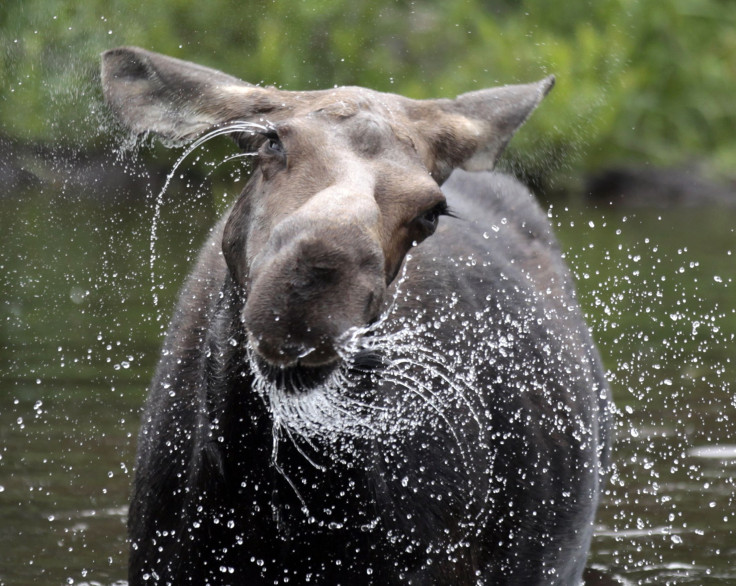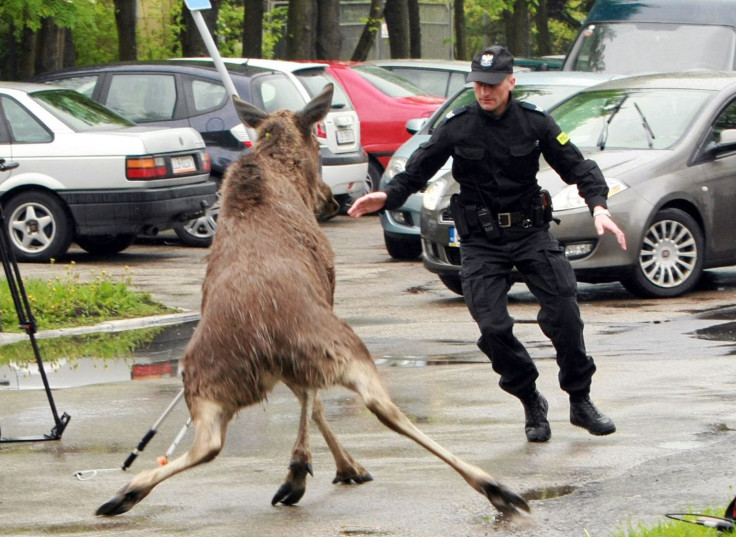Climate Change Affecting Vermont Moose Population? Multi-Year State Herd Study Started

The Vermont Fish & Wildlife Department is starting a three-year study of the state’s moose population. Beginning this month and running through 2019, the study is aimed at understanding the impact of climate change on Vermont’s moose herds.
On its website, the department said: “Moose herds across the Northeast are increasingly under stress from climate change. Specifically, wildlife biologists are concerned that warmer falls and early springs are increasing winter tick numbers that can have detrimental effects on moose. This study will allow the department to better gauge the moose population and its overall health.”
Winter tick is a parasite, tens of thousands of which can be attached to a single moose. Afflicted moose are weakened by blood loss and in the attempt to dislodge the parasites, they often rub against trees which removes their insulating fur, making them prone to hypothermia.
In a press release Tuesday, the department explained the methodology for the study: “Beginning in January 2017, researchers with the Fish & Wildlife Department will start placing radio-collars on up to 60 wild moose to follow their movements and determine causes of mortality. Moose will be captured by expert wildlife capture contractors using nets from helicopters via well-established techniques that minimize stress and harm to the animal. Department staff will then track these moose for several years using the GPS points gathered by the collars, and by visiting moose directly in the field to record observations.”
Based on the gathered data, biologists hope to better understand the cause of death of Vermont’s moose, be it predation by coyotes or bears, brainworm infections or stress caused by winter tick infestation. They will also examine the reproduction and mortality rates of moose, and where the young moose calves disperse to, in order to target conservation activities better.
Cedric Alexander, Vermont Fish & Wildlife’s lead moose biologist, said in the release: “Moose face a variety of potential threats in the northeast, from warmer temperatures to dramatically increased parasite loads and habitat fragmentation. It is important that we understand how much these factors are affecting our moose population in Vermont. Our moose conservation efforts must be based on a strong foundation of science if we are to understand and address these threats in the long term.”

Compared to the high-mark of over 5,000 individuals about 15 years ago, Vermont’s current moose population is about 2,200 today. Despite the conservation concerns, the state still allows the animals to be hunted, since moose are healthiest at medium densities. According to the department, an overabundant population increases the risk of disease transmission, is out of balance with available habitat, and correlates with a higher number of moose motor vehicle collisions.
The study will cost about $578,000, of which 75 percent will be federally funded through the Pittman-Robertson Wildlife Restoration Act, supported by sportspersons.
© Copyright IBTimes 2024. All rights reserved.











